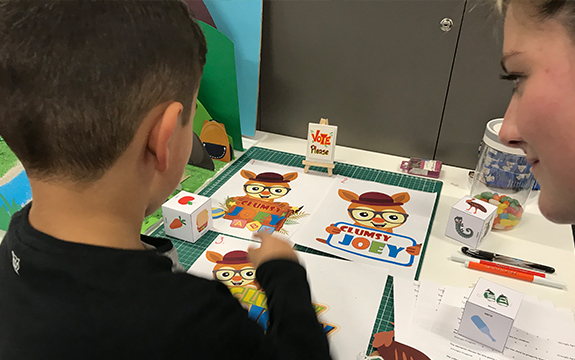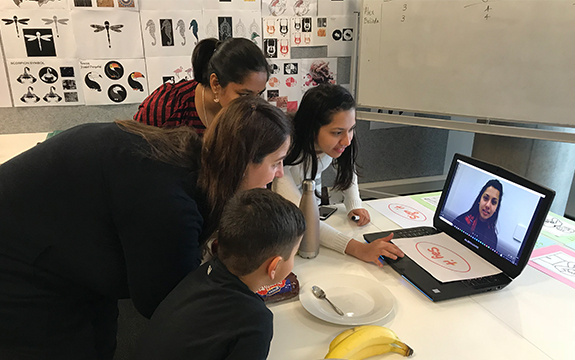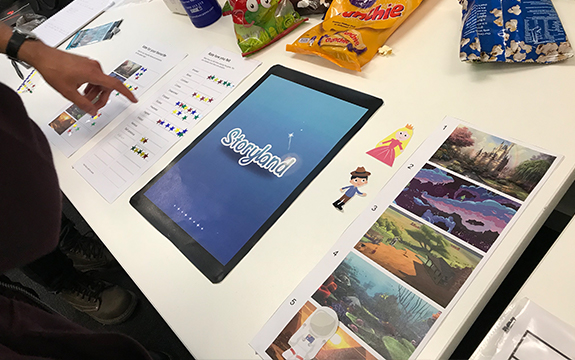Swinburne’s Get Talking App teaches hearing impaired infants to speak

In Summary
- Swinburne researchers developing an app that teaches hearing-impaired infants to speak
- Dr Belinda Barnet inspired to share her knowledge to make sure children with impaired hearing were not left behind
- The prototype apps feature stories and games requiring speech recognition with parents and children interacting and working together
Researchers at Swinburne School of Design are developing an app that teaches hearing-impaired infants to speak. They are collaborating across disciplines to create this world-first digital learning tool.
The idea for the app started with Swinburne Senior Lecturer in Media and Communications Dr Belinda Barnet, who developed a way to teach her own child to speak using standard early intervention paediatric speech pathology exercises.
“A great change has swept deaf culture in the last six years. The change is most dramatic among babies who are born profoundly deaf. These children no longer grow up learning to sign or attend deaf schools,” Dr Barnet explains.
“They are detected by sophisticated equipment within days of birth, given cochlear implants before 12 months of age, and learn to talk.
“Babies have a critical window to acquire fluent speech post implant and it starts to close after 12 months of age,” she says.
Dr Barnet along with Department Chair, Health and Medical Sciences, Rachel McDonald; Emeritus Professor Leon Sterling; Director of Swinburne Baby Lab, Associate Professor Jordy Kaufman; and School of Design Associate Professors Simone Taffe and Carolyn Barnes are collaborating on the project.
In 2016 Swinburne PhD student Caroline Tjung started working with the team in an investigation involving four digital app designs. Her research focuses on how to translate paper-based speech therapy programs and face-to-face therapy into the digital environment.
This year research began as a Swinburne collaborative design program with sixteen Master of Design students and two speech therapists in four research groups and prototypes designed for a children’s speech app.

Students with parent and child working on ideas for the app
The apps feature stories and games requiring speech recognition with parents and children interacting and working together. They are designed as interactive teaching tools for hearing impaired infants from six months to three years.
Ms Tjung is investigating the role of design, languages and the number of words needed for the apps. Using mood boards that six-month-old babies to three-year-olds like to look at, she is researching how they translate to digital. She is using rhyming, stories and repetition, testing for entertainment and distraction values.
She is working on four app designs to test in the Swinburne BabyLab. Based on her findings a prototype design will be developed by August 2019.

One of many app design layouts - Storyland with conceptual characters and worlds
Design has a pivotal role in steering through the complex formative stages. Visualising the process and prompting discussion through prototypes.
The role of colour, rhyming, and repetition in storytelling and how they are activated in a digital environment is an essential element to the research.
“We want to understand how to capture a baby’s attention. How much screen time a baby should have is a debatable issue and we are drawing on the Swinburne Babylab’s research and advice on this,” explains Ms Tjung.
Dr Barnet’s personal insights are published in this article in The Guardian in 2016.

